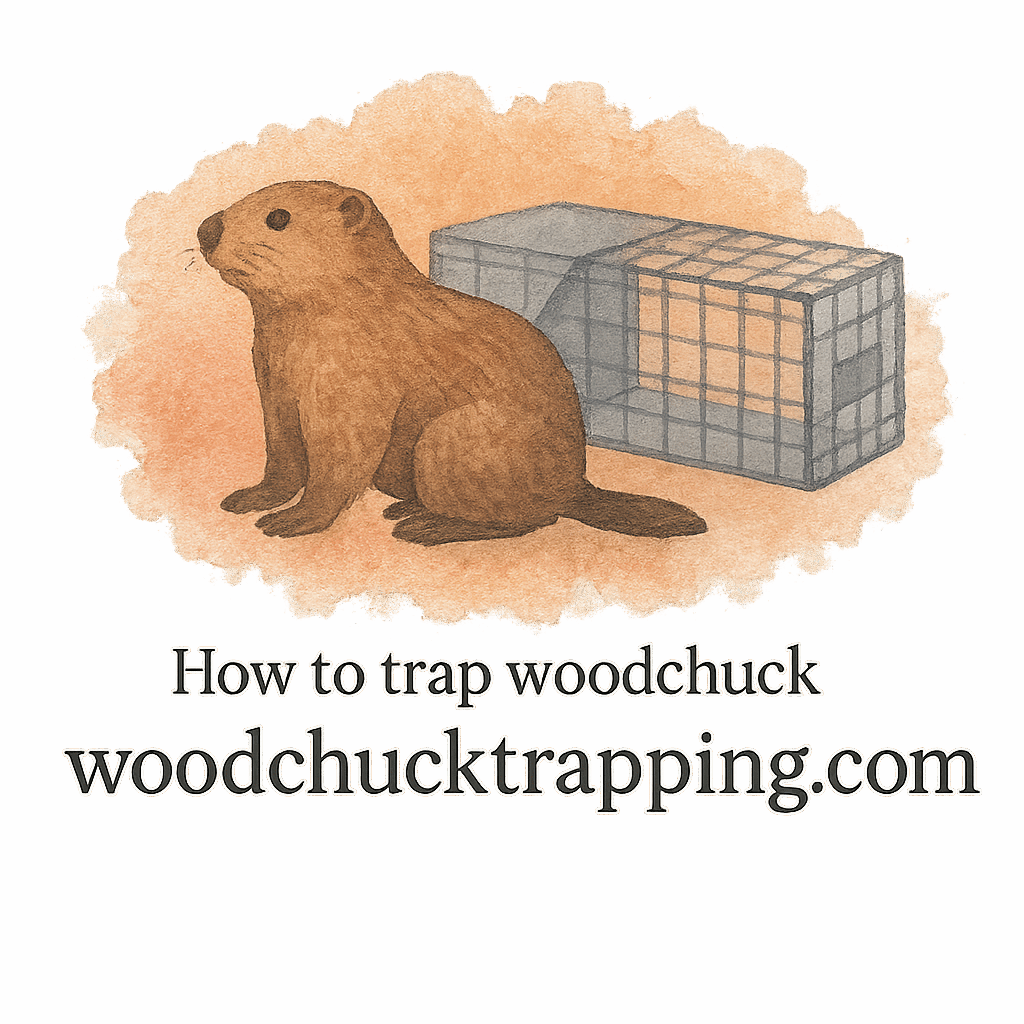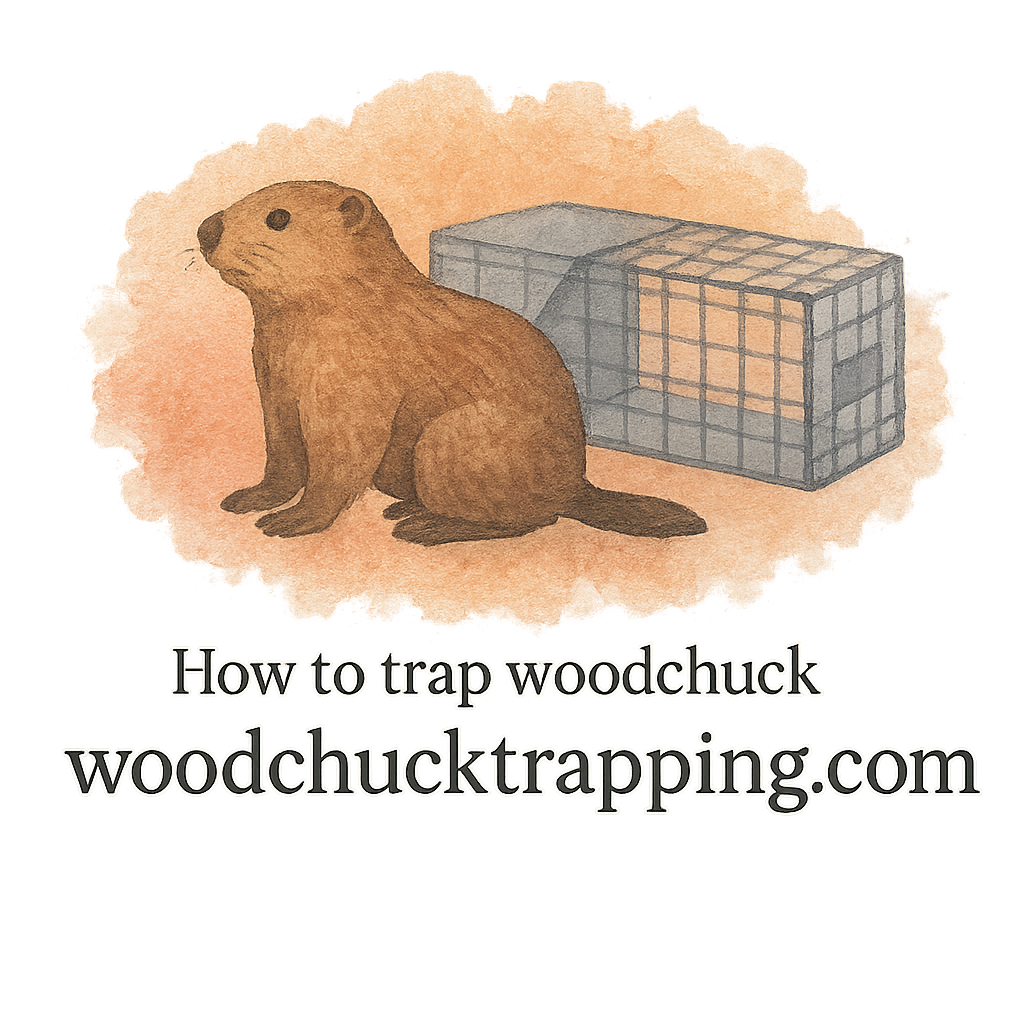Introduction
If woodchucks (also known as groundhogs) are wreaking havoc in your garden, you’re not alone. These furry little diggers are experts at creating burrows, eating your veggies, and leaving behind plenty of yard damage. But here’s the good news: you can manage them without causing harm. In this guide, we’ll break down 10 steps to start humane woodchuck trapping techniques that work effectively while keeping your conscience clean.
Understanding Woodchucks
What Are Woodchucks?
Woodchucks, commonly called groundhogs, are burrowing rodents found throughout North America. They’re known for digging deep tunnel systems and for their love of fresh vegetation. While they may look cute, they can quickly become a nightmare for gardeners. Learn more about woodchuck behavior and control to understand why humane trapping is often necessary.
Signs of a Woodchuck Infestation
Wondering if you’re dealing with a woodchuck problem? Look for fresh dirt mounds, gnawed vegetables, and large burrow openings near your garden fence. These are clear signs of infestation that shouldn’t be ignored.
Why Woodchucks Cause Yard Damage
Their burrows can weaken the soil, damage foundations, and destroy crops. Left unchecked, a woodchuck infestation can cause long-term yard damage. That’s why humane trapping is one of the most effective solutions for both the animal and the homeowner.
Preparing for Humane Trapping
Safety and Legal Considerations
Before you set a trap, check your state’s laws and safety guidelines. Relocating wild animals isn’t legal everywhere, so it’s crucial to know the rules. Always keep safety in mind, both for yourself and the animal.
Essential Trapping Equipment
Having the right tools is half the battle. Humane trapping requires quality equipment that minimizes stress and harm. You’ll want to check out these equipment reviews before making a purchase.
Gloves and Handling Tools
A solid pair of gloves is non-negotiable. Not only do they protect you from bites, but they also mask your human scent when setting traps. Proper handling gear ensures you stay safe during the process.
Compact Traps for Small Yards
If you have limited outdoor space, consider compact traps. They’re effective, humane, and easy to set up even in tight areas.

Step-by-Step Guide to Humane Trapping
Step 1: Identify Burrows and Activity Signs
Start by spotting burrows and fresh digging. Knowing where the woodchucks are most active will help you set traps strategically.
Step 2: Choose the Right Trap Gear
Pick sturdy, humane trap gear that’s big enough to catch an adult woodchuck but safe enough not to injure it.
Step 3: Select Humane Trap Placement
Trap placement is key. Position the trap near the main burrow entrance or along a well-worn path. This simple adjustment increases your chances of success.
Step 4: Use Effective Lures and Scent Baits
Woodchucks can’t resist fresh produce like apples, carrots, or lettuce. Pair these with professional lures and scent baits for best results. Explore tips on trap scent to make your setup more effective.
Step 5: Set the Trap Correctly
Follow the how-to-trap guides for proper setup. Make sure the trigger is sensitive enough to activate when the animal steps inside.
Step 6: Monitor Traps Regularly
Never leave a trap unchecked for more than a few hours. Humane trapping techniques mean minimizing the time an animal spends inside.
Step 7: Handle Trapped Animals Safely
Once caught, use protective handling tools and always wear gloves. Avoid direct contact to reduce stress for both you and the animal.
Step 8: Relocate Humanely and Legally
Check your local laws and safety rules before relocating. Release the animal in a wooded area at least 10 miles away to prevent its return.
Step 9: Prevent Future Infestations
Seal burrows, install fencing, and use natural deterrents. Visit the prevention and damage control guide for long-term solutions.
Step 10: Maintain Long-Term Yard Protection
Consistent maintenance is key. Use proven trapping essentials and yard strategies to keep woodchucks away permanently.
Common Mistakes to Avoid
Many beginners make the mistake of leaving traps unscented or ignoring legal requirements. Others don’t check traps often enough, which defeats the purpose of humane trapping. Avoid these errors by sticking to reliable trapping techniques.
Additional Humane Trapping Techniques
If you’re dealing with persistent woodchucks, explore alternative methods like repellents, fencing, or professional trapping services. Dive deeper into humane techniques to find the best fit for your situation.
Conclusion
Humane woodchuck trapping doesn’t have to be complicated. With the right equipment, knowledge, and a little patience, you can reclaim your garden without harming wildlife. Follow these 10 humane trapping steps, and you’ll be well on your way to a safe, woodchuck-free yard.
FAQs
- What’s the best bait for trapping woodchucks?
Fresh fruits and veggies like apples and carrots paired with scent baits work best. - How can I tell if woodchucks are damaging my yard?
Look for burrows, gnawed plants, and visible signs of digging around your garden. - Are humane traps effective for large woodchucks?
Yes, as long as you choose the right trap gear designed for larger animals. - Can I trap woodchucks in a small yard?
Absolutely! Use compact traps designed for small yards. - Is it safe to handle a trapped woodchuck?
Only if you use proper gloves and handling tools. - How often should I check my traps?
Ideally, every few hours. Humane trapping means reducing stress for the animal. - What’s the best way to stop woodchucks from coming back?
Use fencing, seal burrows, and follow damage prevention tips for lasting results.


